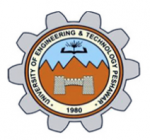1Department of Computer Science and IT, Jalozai Campus, UET Peshawar, Khyber Pakhtunkhwa, Pakistan; 2Department of Electrical Engineering, Jalozai Campus, UET Peshawar, Khyber Pakhtunkhwa, Pakistan; 3Pak-Austria Fachhochschule: Institute of Applied Sciences and Technology, Haripur, Pakistan.
*Correspondence: Abdul Hafeez, Department of Computer Science and IT, Jalozai Campus, UET Peshawar, Khyber Pakhtunkhwa, Pakistan; Email: abdul.hafeez@uetpeshawar.edu.pk
ABSTRACT
Important biological molecules including DNA/proteins and diseased human cells can be detected by a variety of micro and nanoscale devices and systems. Unfortunately, these biomedical applications suffer from huge amount of data. That is, the data generated by such systems is so large that a typical computer workstation cannot handle it in real-time. Traditional approaches rely on unloading raw data to off line storage and suffer from the trade-off of an insufficiently rigorous sampling rate. Furthermore, the phases leading to useful decision-making often follows pre- and post-processing in a subjective manner, which is tedious, time-consuming and erroneous. An important and an unrealized need of these systems is the real-time answer from the acquired data, which is often multi-dimensional and at remarkably high-resolution. The inherit noise in the data is another major bottleneck for real-time processing. This entails expediting the decision-making process as well as to instill intelligence in the approach to reduce subjectivity to a greater extent. To harness the high computational power offered by commodity graphics processing units (GPU) and accomplish the decision-making in real-time has gained traction in a gamut of recent biomedical applications. This review article investigates the use of state-of-the-art GPUs to benefit the biomedical community through real-time decision-making from huge amount of biomedical data mainly due to its massively parallel architecture. The recent advances in GPUs such as Fermi- and Kepler-based setup seem to be promising for an increasing complexity in the algorithms and the demands of growing data in biomedical applications both in dimension as well as in throughput. Understanding these approaches can help the biomedical community to shift batch-mode processing from cluster-based machines to real-time processing on low-end machines or smartphones in order to help the decision-makers and stack holders for early disease detection.
To share on other social networks, click on any
share button. What are these?





